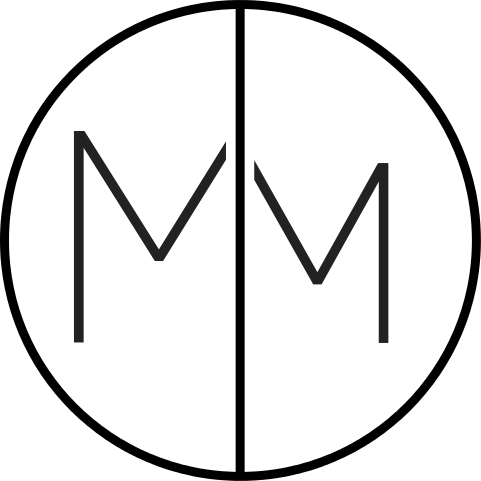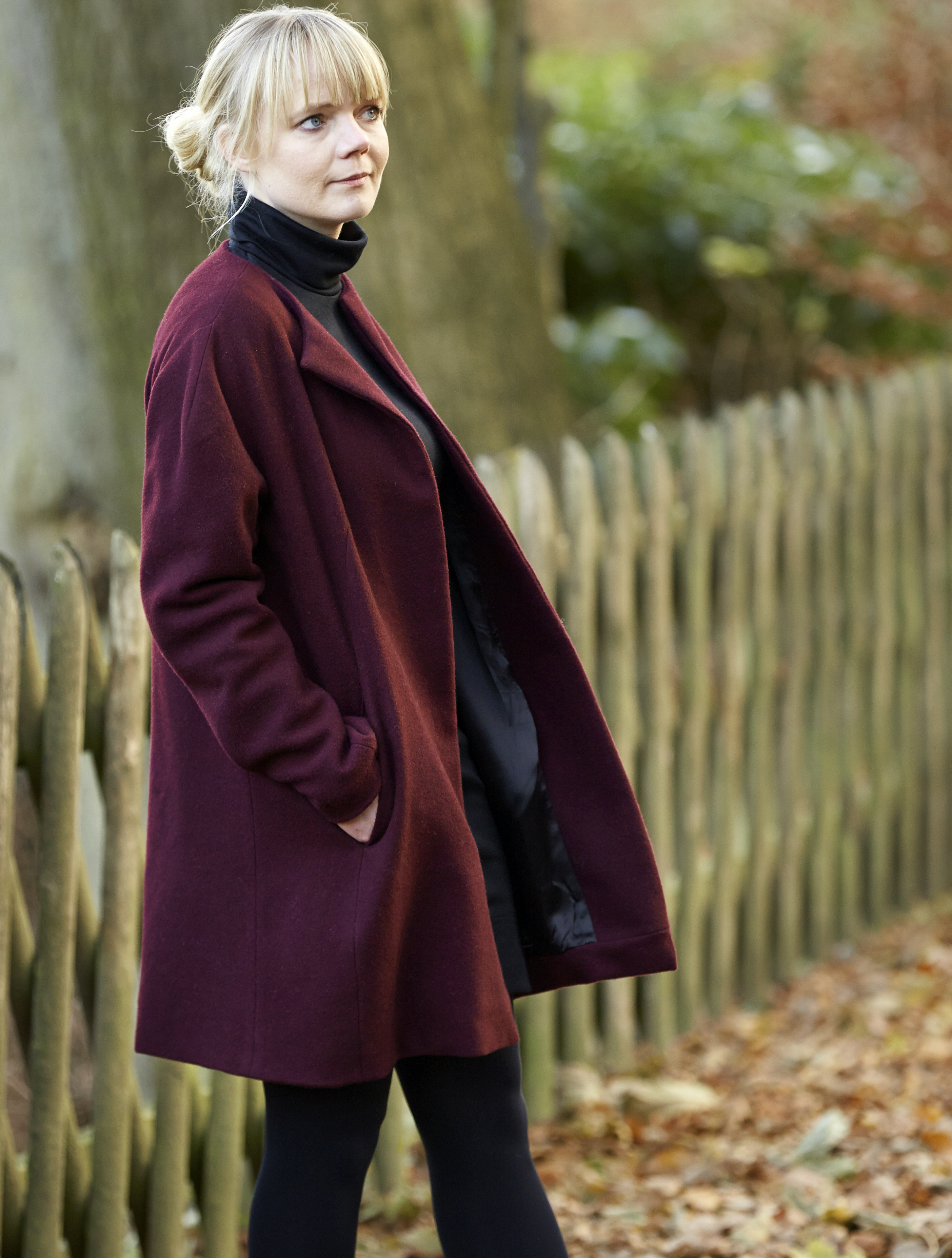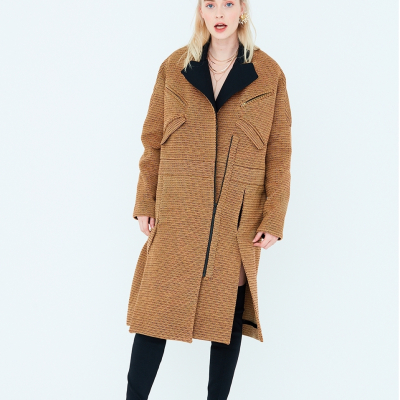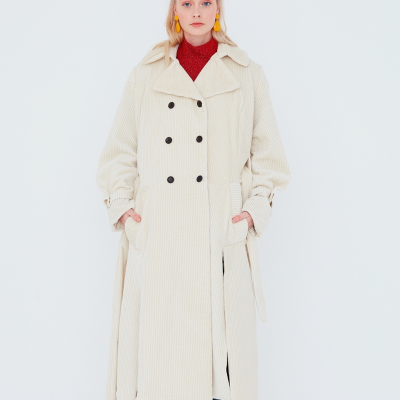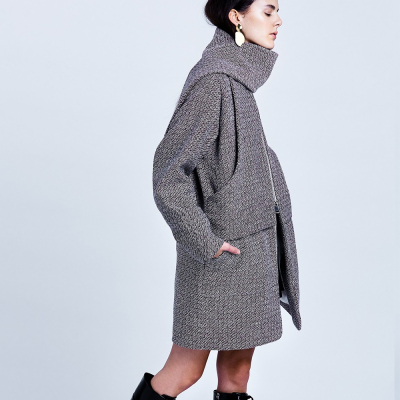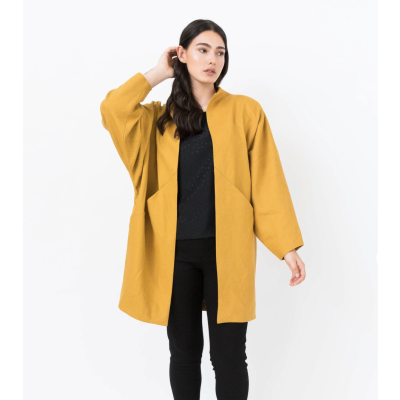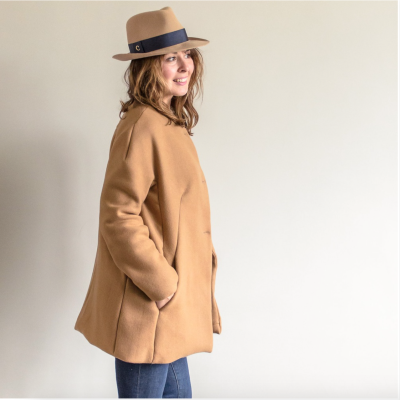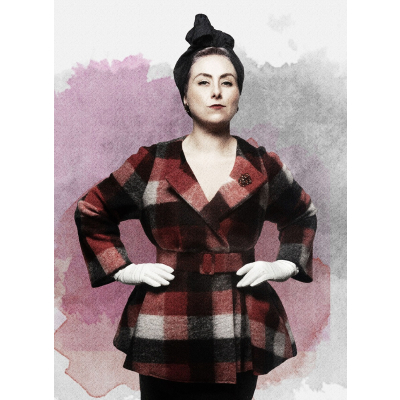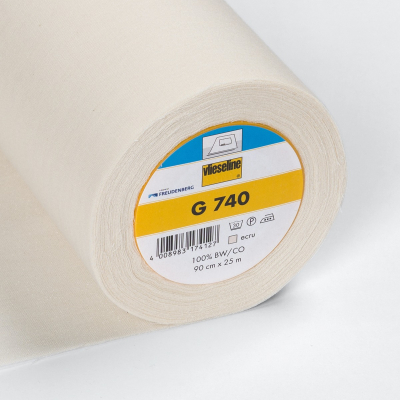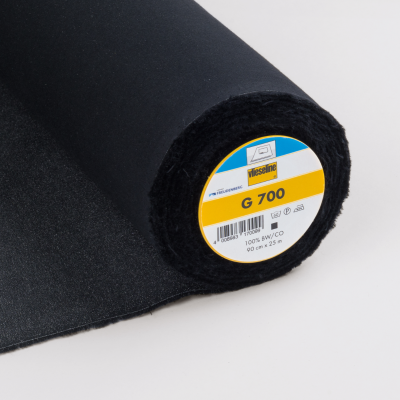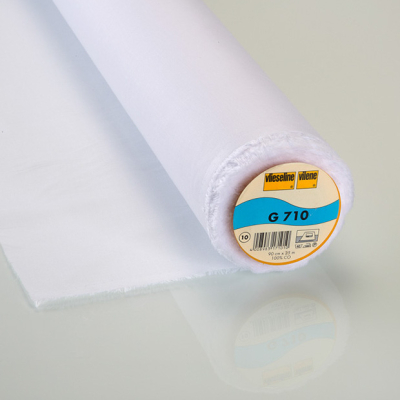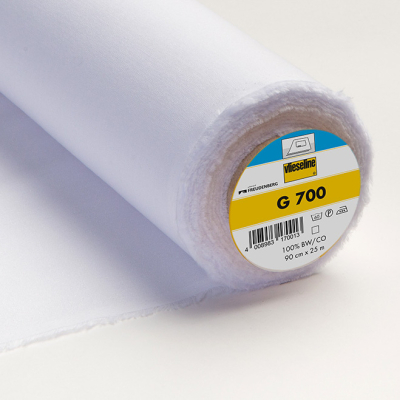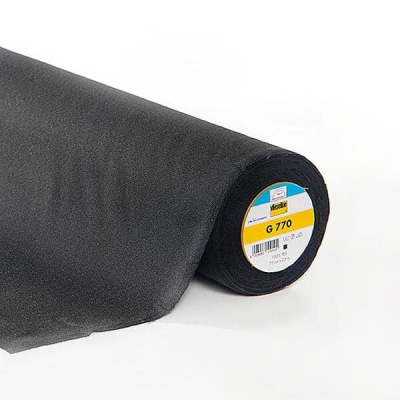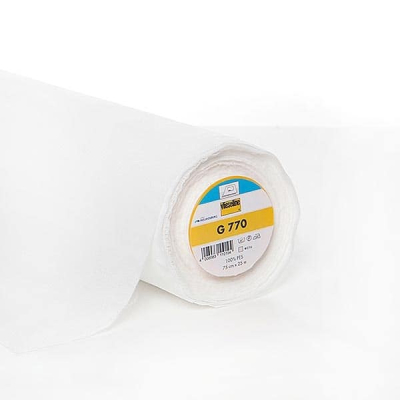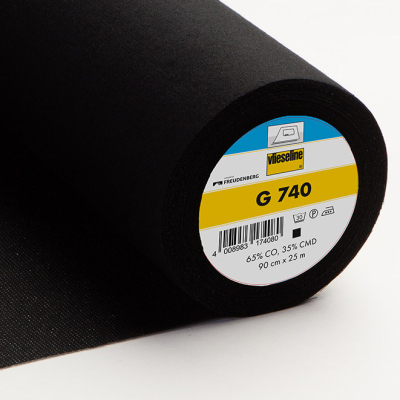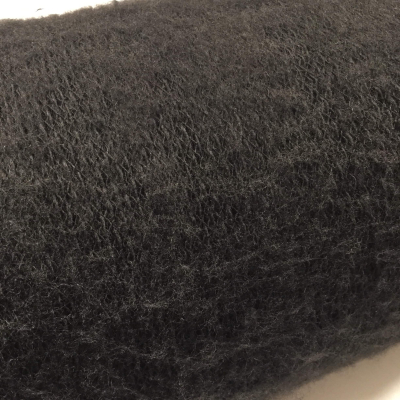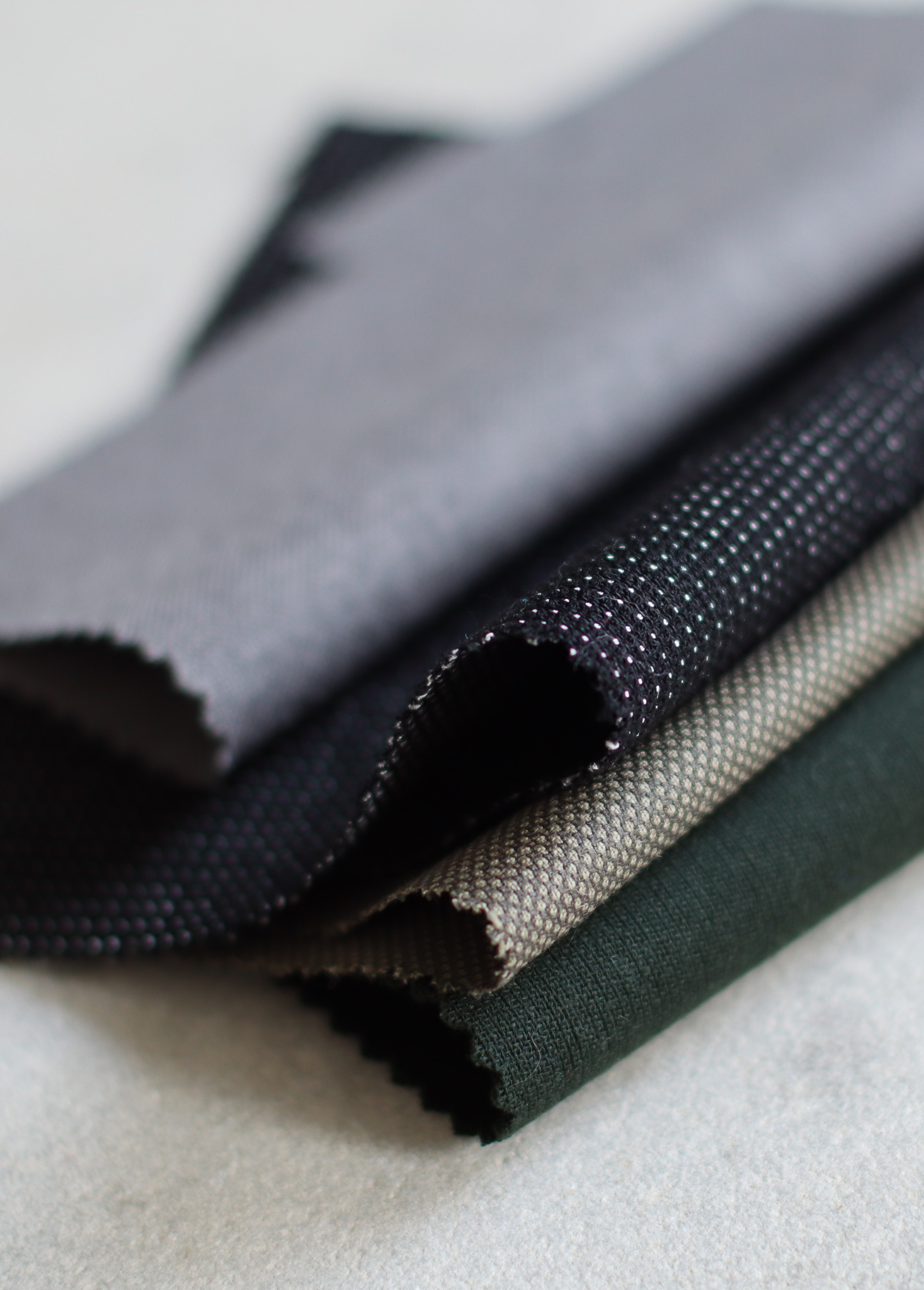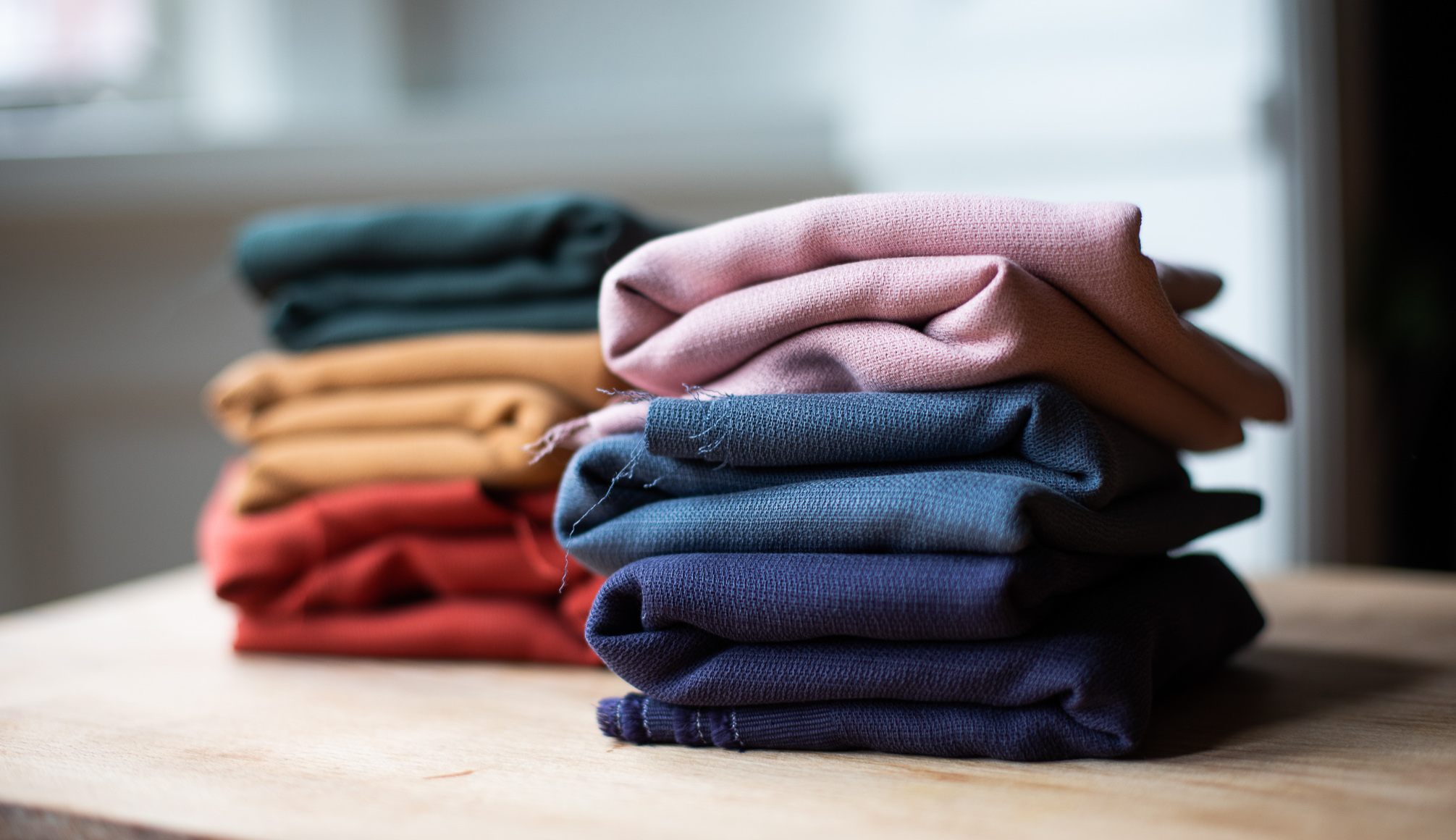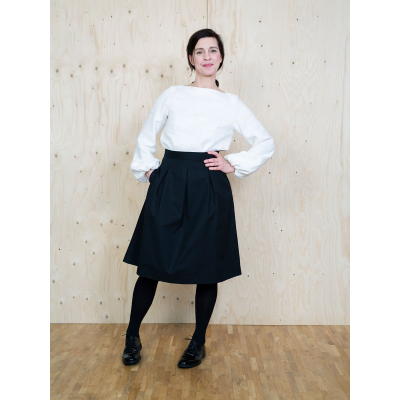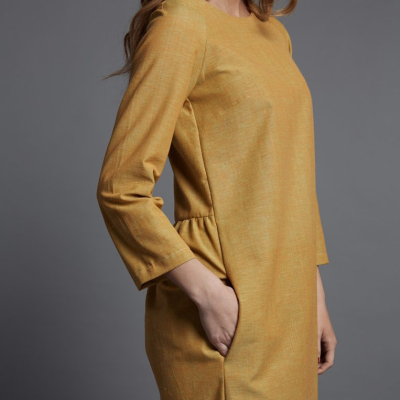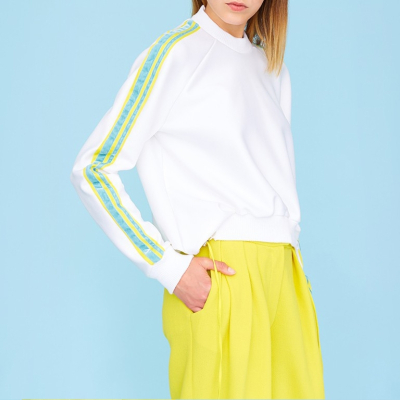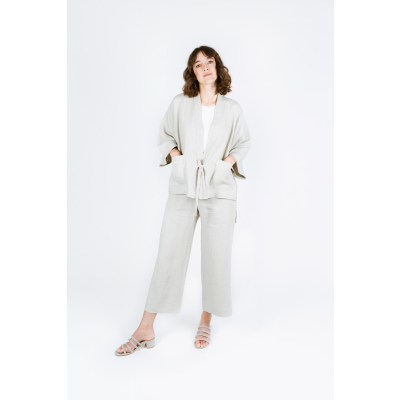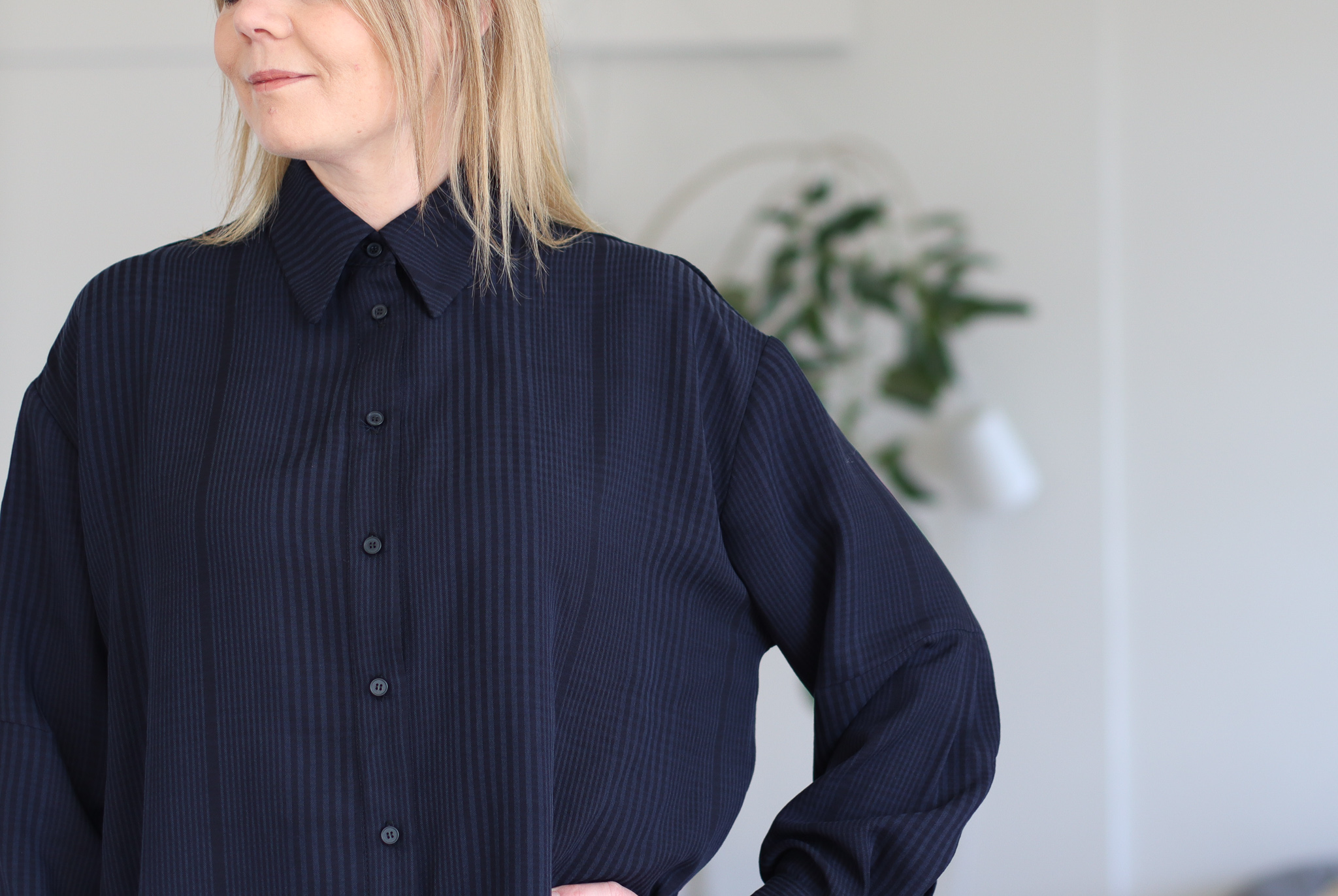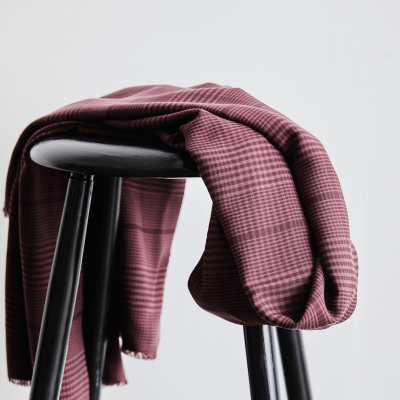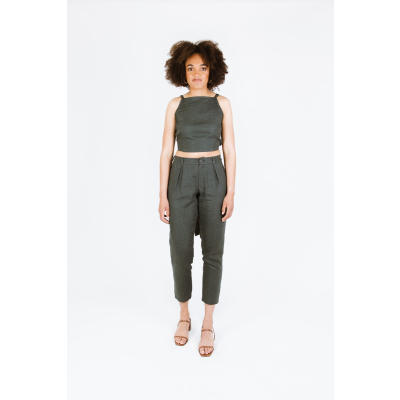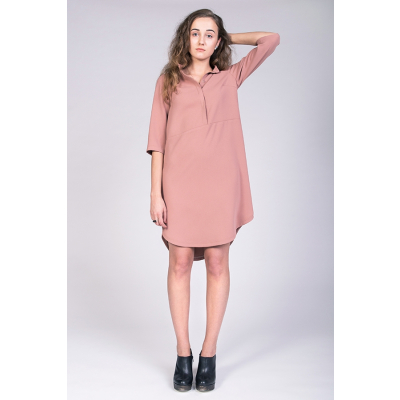SAMPLE BOX #2
November 2019
On this page you will find information about the samples in sample box #2.
The page is set up with a section for each bundle (A, B, C and D) in the sample box. Below each section you will find the products in each bundle.
BUNDLE A
WOOL - for jackets and coats
Wool for jackets and coats can be a very broad term, since there are so many different weaves, weights and finishes in wool coating.
All our wool coating is deadstock fabrics - which means that it is fabric we buy from clothing designer's stocks in Italy.
That means, that in spite of general rising prices for wool, we can get som really nice qualities for a really nice price. So if you might think that some of our wool coatings are almost to cheap, this has nothing to do with the quality.
Second, we can often find some very delicious qualities, beacuse they are often special made for designers (like Hugo Boss, Armani etc.) - and then you can make a very unique coat.
Third, it means that we only have limited quantity. Sometimes we are lucky to be able to get more, but most often, they're gone, when they're gone. So don't think too long if you fall in love.
When you choose wool for a jacket or coat, it (obviously) important that you choose a color that suits you. A coat is something we wear a lot of the time for maybe 2-3 months, so this might not be the garment where you want to go to far out the comfort zone. Choose what suits you and the clothes you normally wear with the coat.
Next, it is also important to choose a wool coating that is suitabe for the pattern you are using for the coat. If you have a lot offine details, lines etc., don't choose a too weighty wool coating, but go for a lighter one in order to be able to make pretty and neat seams.
HOW THICK IS A WOOL COATING?
The weight of a wool coating says something about how heavy it is, but it doesn't neccessarily say how thick it is, and how good it will isolate and keep you warm.
If you take sample A6 (Polo Teal), it has a weight of 436 g/m2 and it feels soft and thick. Compared to sample A5 (Vara) with a weight of 550 g/m2, this is heavier, but it doesn't feel as soft and thick as A6.
The difference is that the weave in A6 is more loose, and the wool fibres have more structure and fullness, which means that there is a lot of air in the weave which is great for isolation and keeping warm.
The weave in A5 is more dense and firm, which is why is heavier. It doesn't have much air in the weave to isolate in the same way as A6. But since it is more densely woven it will more resistant to wind, which can also be nice in a coat.
On an different weight scale, we have A9 (Camel) with a weight of 260 g/m2, which is a wool coating in the very light end (which is also suitable for other garments than coats). This would be a good choice for coats or jackets with where you have a lot of fine details, and if you want a light and more drapey look of your coat. Since it is rather light it does not isolate the same way as the heavier wools, but you can add this from the inside instead with an interlining - we will get back to that further down the page.
Below you will find the wool coatings included in hte sample box - you will find our entire selection of wool for coats and jackets here >
The coat on the photo is aime comme Montaigne made in sample A1.
As a FABRIC CLUB memeber you get 15% off all wool coating fabrics in November.
PRE-TREATING WOOL COATING
Do not wash wool coating. Ever. Neither in hand or in machine. If you wan't to pre-treat your wool to pre-shrink it, there are other ways to do it that won't damage the fibres.
1. Steam it by laying it flat and hold your steamer or iron 5 cm above the surface and direct the steam to the fabric - you shouldn't iron it, so don't let the iron touch the surface. Work you way through the fabric piece bit by bit and leave it flat for an hour or so when you are done to let the steam work thorugh the wool. If you fold the fabric when it still has moist from the steaming you risk to pull it out of shape and make permanent folding marks.
2. Another way is to take a couple of damp towels and put in the dryer with the wool. Give it half an hour on warm setting, so the towels will damp the fabric. After this treatment it is also important to leave the fabric flat to dry for an hour or so.
3. You can also have your wool fabric dry-cleaned before you cut and sew, so it gets the same treatment as it will get later if you dryclean the finished coat.
INTERLINING FOR WOOL COATS
Our best recommendation to turn up the isolation and ability to keep warm in a wool coat is a wool interlining. In Danish it's called 'French Interlining', but we haven't been able to find whether this is actually the English term for it as well. French interlining is a very loosely knitted wool with a lot of airy space to isolate. It is soft and doesn't take up much space inside a coat, so it won't get bulky and rigid to work with - which can be the case if you choose a thick batting or thinsulate interlining.
The French interlining is also good beacuse it is natural fibres, so you maintain all the good properites by making a coat in wool. If you choose a syntetic fiber for lining or interlining you will make a 'shell' between you and the wool, which will reduce the breathable and isolating properites of the wool.
Whn you work with French interlining, you can choose to use it both 1 or 2 layers, depending on how much you want to isolate our coat. Often it can be enough to use the interlining in front and back - or only the upper part of front and back - and not in the sleeves to avoid them getting too thick.
You might have to consider going up a size when you use interlining in a coat to make more room for you inside the coat.
Tip: when you cut your interlining, cut it according to the pattern parts for the outer fabric and attached it to the outer fabric, before you start sewing your coat. Trim it for the hemlines so you don't get double layer in the bottom and sleeve hem.
If you cut you interlining according to the lining pieces and attach it to the lining, you will loose the fleksibility of the lining and you won't have the interlining covering facings etc.
We have included a sample of the French interlining in the sample box.
FUSING FOR WOOL COATING
Wool coating must be interfaced to keep in shape. Specially around collars, hems, facings etc., but sometimes you will also need to interface larger pieces, like the entire front pieces to get enough stability and shape.
To interface wool coating we receommend using a woven cotton interfacing. It's a very thin cotton with glue dots on one side to apply the same way a you use regular interfacing.
The advantage of using the woven cotton interfacing for wool coating is that you get much stability while you maintain a soft touch and allow to wool to shape without getting stiff.
We recommend these types of interfacing:
G700, which is a heavy woven cotton interfacing, to give strength and shape for light to medium weight fabrics.
G710, which is a medium weight woven cotton interfacing to give strength and shape to medium weight fabric.
G740, which is a medium weight woven cotton interfacing with a stronger weave to give shape and strength to medium to heavy weight fabric.
G770 is also a kind of woven interfacing but it's flexible/slightly stretchable and made of syntetic fibres. It gives shape and stability, but maintains the flexible structure, so it's great for flexible fabrics like boiled wool or heavy wool knits.
Which interfacing to use depends on the fabric and the garment you are making. You will have to feel and try in order to choose the right one. Make a few tests and see if you get the shape, hold and texture you want. You might have to use different types of interfacing for different parts of the coat to get the best result.
It's very important that you make sure to apply the interfacing to fabric so it's attached with no folds, bulks or areas where the interfacing is loose. This will be visible on the outside of the coat, so you really want to take your time and do this very thoroughly.
Your pattern dosn't always tell you the answer to how, where and which interfacing to use. It all depends of the fabric, so you have to make your own decisions on this.
Below you will find some of our favorite patterns for coats, and below the coats we have listed the interfacings mentioned above.
-
Nova Coat
€22.95 -
aime comme Montaigne
Special Price €9.60 Regular Price €16.00 -
NO. 4 London
€24.90
-
G740 - ecru
€9.90 -
Vlieseline G700 - Black
€11.40 -
Vlieseline G710 - White
€11.40 -
Vlieseline G700 - White
€11.40 -
Vlieseline G770 - Black
€9.40 -
Vlieseline G770 - White
€9.40 -
G740 - black
€9.90
BUNDLE B
LIGHT WOOL
Most of our lighter wools are also deadstock fabrics, so quantities are limited and the qualitites are really nice for a really nice price - but stock won't last forever.
We have both pure wool and blends with viscose, cotton, linen etc. - often added a bit of polyester or polyamid to give strength and firmness.
The lighter wools are great for both trousers, skirts, blouses, shirts, dresses and light jackets. It all depends on weight, drape and touch to decide what to make with them. Wool has the favorable property that is doesn't crease or wrinklw much, which is why it is often used in more formal garments that are meant to keep in shape while worn.
Wool does not require to be washed very often - actually preferably never if you can avoid it. Air and steam can do much to refresh a wool garment. If you make clothes that you know you will want to wash it is very important that you wash the fabric before you cut and sew to have it pre-shrunk. Whether it's a 100% wool or a blend, always use soap for wool and always use a wool setting on the machine or wash in hand. Regular soap contains enzymes that will damages the wool fibres. An easy to remember guide is to always pre-treat it the way you expect to treat the finished piece of clothes.
When you make clothing with wool and you take good care of it, you will have clothes that last forever.
When using wool for clothes that get in touch with your skin, you should always consider if you need to line it.
Some types of wool will itch to the skin, and it's very different to all of us how we react to wool on the skin. It's impossible for us to say whether your skin will react to a wool, so you need to feel it yourself. The advantage of lining woll is also to get a better movement in the garment - wool tends to stick and climb to other materials, so for a dress or skirt in wool worn with stockings, lining is almost always a must do .
We recommend to use our ligth cupro lining because it's very light anf feels natural and breathable to the skin - and it doens't get static, which is a big plus when lining wool, since wool can cause some static reactions when combined with a syntetic lining.
We have listed all the products in bundle B below.
BUNDLE C
TENCEL JACQUARD - new arrival!
Tencel Jaccquard is among the fall news in the sustainable collection from meetMILK, and here you get samples of all 7 colors.
It's not a secret that we are madly in love with this one! We love the beautifull simple pattern in the jacquard texture, and we love the soft fullness in the texture, which has a perfect balance of ease and weight. It has an understated elegant touch, which is complemented by the matte and peachy soft look of the colors.
We're thinking dresses, skirts and tops with fullness and soft drape.
We have listed all the colors below, and below those, we have picked 8 patterns which are on our list to try with this fabric.
Tencel Jacquard is part of the meetMILK collection which is always 15% off for club members.
-
Puff Shirt
€24.00 -
The Gathered Dress
€22.30 -
Le 504 - Loose Sweatshirt
€16.70 -
Luna Jacket
€22.95
BUNDLE D
TENCEL PLAID - new arrival!
We stay in the new arrivals from meetMILK with the samples in bundle D, where we have the Tencel Plaid.
It a soft weave in a nice and simple plaid pattern with a dark and bright shade og the same color tone.
It's perfect for a classic shirt or shirtsress, but also great for tops, blouses, dresses, skirts and light trousers.
The soft drape and the firmness makes it easy to work with for both sharp details like collars and stands, and for more loose details like ruffles and pleats.
You will find all 4 colors in bundle D below, and below those we have added 4 pattern suggestions - and a fifth one on the photo, which is Le 606 shirtdress from DP studio in the Blueberry colorway.
Tencel Plaid is part of the meetMILK collection which is always 15% off for club members.
-
Two-Tone Plaid - Maroon
Special Price €14.05 Regular Price €28.10
-
Guise Pants
€22.95
